This is the first of a series of articles detailing significant changes approved by the Technical Committee for the 2018 Canadian Electrical Code Part I (CE Code). The final meeting for 2018 CE Code changes took place in June of this year. It should be noted that the 2018 CE Code will be published by CSA Group on January 1, 2018, and the information provided in this article is based solely on the consolidated memorandum of revisions to the CE Code, published by CSA Group after the June meeting.
The 2018 CE Code has 69 new or revised special terminology and definitions changes, 535 rule changes, 76 table changes, and 228 Appendix B note changes.
Code-wide changes include changes to the scope of 11 sections, replacement of the phrase “specifically approved for the purpose”, moving allowable ampacities rules to Section 4, moving wiring method rules to Section 12, and introduction of the definition of the word “cable”.
The section scope changes were mostly editorial replacing the word “covers” with “applies”. Replacement of the phrase “specifically approved for the purpose” and similar phrases were a result of a task group assigned to align the code with changes to Appendix C Clause C11.15 that now reads: “The term ‘approved’ as defined in Section 0 and described in Rule 2-024 applies to all electrical equipment and shall not be used outside of Section 0 and Rule 2-024. Where additional emphasis is required to describe equipment acceptability, a note with a reference to the product standard shall be made in Appendix B.


Note: Appendix C details the organization and rules of procedures used in the development of the CE Code Part I.”
The new definition for the word “cable” resulted in a revised definition for the word “conductor” and new definitions for “bare conductor”, “covered conductor”, “insulated conductor”, “jacket”, and “wire”. The definitions now read:
“Conductor – a conductive material that is constructed for the purpose of carrying electric current.
“Bare conductor – a conductor having no covering or electrical insulation.
“Covered conductor – a conductor covered with a dielectric material having no rated dielectric strength.
“Insulated conductor – a conductor covered with a dielectric material having a rated dielectric strength.
“Cable – a complete manufactured assembly of one or more insulated conductors which may also include optical fibres, fillers, strength members, insulating and protective material, having a continuous overall covering providing electrical, mechanical and environmental protection to the assembly.
“Jacket – a non-metallic covering on a cable which provides mechanical and environmental protection for the cable.
“Wire – see Conductor.”
The rationale for these new definitions was to provide separate dedicated definitions in order to recognize the specific differences between conductors and cables. The reworded definition of conductor is now limited to the conductive material (aluminum, copper, etc.) used to carrying electric current.
The new definition for bare conductor recognises a conductor that does not have a covering or electrical insulation, and these conductors would typically be used for bonding and grounding.
The new definition for covered conductor recognises a conductor that is covered with a dielectric material that does not have a rated dielectric strength, covered conductors are typically used inside distribution equipment and for overhead high voltage installations.
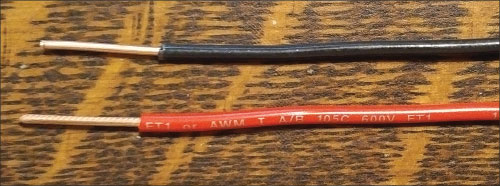
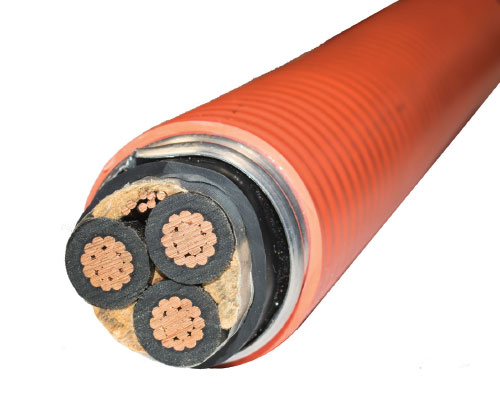
The new definition for insulated conductor recognises a conductor covered with a dielectric material that does have a rated dielectric strength. Examples of insulated conductors are RW90XPLE, T90 Nylon, TW75, etc. Insulated conductors are typically installed in a raceway.
The new definition for cable recognises a manufactured assembly of one or more insulated conductors that has a continuous overall covering providing electrical, mechanical and environmental protection to the assembly. Examples of cable include non-metallic sheathed cables (NMD90, NMWU, etc.), armoured cables (AC90, TECK90, ACWU, etc.), mineral-insulated cable (MI), Aluminum-sheathed cable (RA75, RA90), copper-sheathed cable (RC90), tray cable (TC), and solar photovoltaic cable (RPVU) to name a few. A more complete list of cables can be found in the CE Code Table 19. Cables are typically installed in or on building structures or equipment without the use of a raceway.
The new definition of jacket recognises a non-metallic covering on a cable that provides mechanical and environmental protection for the cable. Examples of the jacket on a cable is the outer material on NMD90 or TECK90 cables, on a single conductor cable such as RA90 or ACWU90.
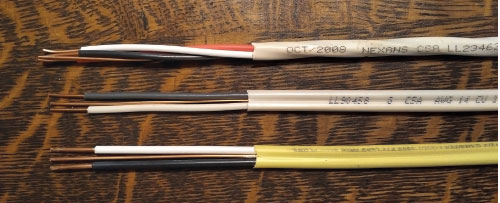

The final new definition as part of this proposal was for wire; this definition simply directs code users to the definition of conductor.
Proposals were also submitted to confirm the use of the words “conductor”, “cable”, “jacket”, and “wire” are consistent throughout the code. The proposals for Sections 0, 2, 4, 6, 8, 10, 12, 16, 22, 26, 30, 42, 46, 62, 64, and 86 have been completed resulting in editorial changes. The remaining code sections will be addressed in the next cycle.
An example of a rule that includes both the changes for the “cable” definition and the “specifically approved for the purpose” proposals is Rule 2-134. The following rule shows these typical changes throughout the code.
2-134 Sunlight resistance requirements (see Appendix B)
Insulated electrical wiring conductors and cables and totally enclosed non-metallic raceways installed and used where exposed to direct rays of the sun shall be specifically approved for the purpose and be so marked for the purpose.
The rest of this series of articles will detail changes in order of appearance in the code.
Section 0
The definition for “Hazardous location” has been changed to align the changes in the 2015 CE Code recognizing Zone 20 and 21 locations by deleting the reference in the definition to combustible fibers.
The definition for consumer’s service was revised to read: “Service, consumer’s — all that portion of the consumer’s installation from the service box or its equivalent up to and including the point at which connection is made to the supply service.” This change has removed the reference as to who makes the connection.
A new definition has been added to recognize HDPE conduit from the new CSA Standard C22.2 No. 327-16 HDPE conduit, conductors-in-conduit, and fittings. More information can be found in the January/February IAEI News article https://iaeimagazine.org/2016/01/18/hdpe-conduit/ .
Section 2
Rule 2-100 has two changes, first is the addition of short-circuit current rating or withstand rating to the list of equipment marking requirements in Subrule (1). The second change is the addition of a new inserted Subrule (4) that reads: “(4) Where the maximum continuous load allowed on a fused switch or circuit breaker as determined in accordance with Rule 8-104 (5) and (6) is less than the continuous operating marking of the fused switch or circuit breaker, a permanent, legible caution marking shall be field applied adjacent to the fused switch or circuit breaker nameplate to indicate the maximum continuous loading permitted for connection to the fused switch or circuit breaker.” There are many installations where it is difficult to confirm the size of the installed conductors without a system shutdown; this new field marking is intended to provide clear notification of the limited loading capabilities for the installation.
Rules 2-308 and 2-310 were revised to address inconsistencies between the rules regarding the type of electrical equipment that requires specific working space and to clarify such clearance requirements. Electrical equipment that requires adequate working space is equipment that contains renewable parts, disconnecting means or operating means, or equipment that requires examination, adjustment, operation or maintenance. In addition, the reference to transformers was removed and a new inserted Rule 2-312 was created specifically for transformers that reads:
“2-312 Transformer, working space. Except as provided for in Rule 26-242 and notwithstanding Rules 2-308 and 2-310 for transformers rated greater than 50kVA a minimum horizontal working space of 1 m shall be provided and maintained on the sides of the transformer that provide access to conductor connections.”
When reading these rules keep in mind that Rules 2-308 and 2-310 require working space with secure footing while new Rule 2-312 only requires working space.
Section 4
Eight subrules in Rule 4-004 have changed. Most of these changes are related to moving allowable ampacity requirements from Section 12 to Section 4. Subrule (7) has been modified by clarifying relevant references to the tables containing applicable correction factors and by limiting the exception to apply correction factors to auxiliary gutters containing 30 conductors or less. Subrule (22) [previously Subrule (23) in the 2015 CE Code] now requires the maximum calculated load for single dwellings be included on a field applied caution marking where the conductor sizing is based on Table 39.
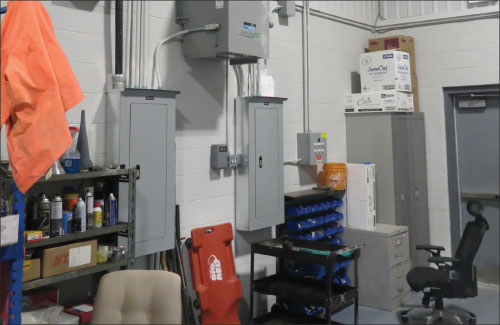

A new Subrule (2) as been added to Rule 4-028 that will require an identified conductor installed at each location of a manual or automatic control device for the control of permanently installed luminaires. This requirement was added to address safety issues arising from the introduction of automatic control devices for energy management in residential, commercial and institutional buildings. Automatic control devices for energy management have a need for a connection to the identified conductor. The requirement includes manual control devices (switches) so that when the switch is changed to an automatic control device the identified conductor is ready for connection.
Section 6
Rule 6-112 covering the support for the attachment of overhead supply or consumer’s service conductors or cables has a new inserted Subrule (2) that reads:
“(2) The point of attachment shall be:
(a) on the same side of the building as the consumer’s service head or equivalent;
(b) solidly anchored to the structure or service mast;
(c) in a position that allows the overhead service conductors or cables to have an angle away from the structure; and
(d) in compliance with the requirements of the supply authority.”
Also for consistency, the word “support” in this rule has been changed to “means of attachment”. Subrule (2) was added to prevent installations where overhead supply service conductors come in contact with the building. As part of the same code proposal, Item (b)(ii) was added to Rule 6-116 to require the support for attachment of the overhead service conductors or cables to be a maximum of 600 mm horizontally from the consumer’s service head location.
A new Subrule (3) has been added to Rule 6-212 that reads: “(3) Where consumer service conductors enter a service box that is not equipped with a barrier between the line and load side, these conductors shall
“(a) enter the service box as close as possible to the line terminals of the main switch or circuit breaker; and (b) not come into contact with or cross conductors connected to the load terminals of the main switch or circuit breaker.”
Subrule (3) was added to align the requirements in the CE Code with the standards for fusible switches and circuit breaker enclosure CSA Standards C22.2 No 4 and C22.2 No 5.
Section 8
Two new definitions have been added to the special terminology in Rule 8-002 that states:
“Control of electric vehicle supply equipment loads – the process of connecting, disconnecting, increasing, or reducing electric power to electric vehicle supply equipment loads.
“Electric Vehicle Energy Management System – a means of controlling electric vehicle supply equipment loads comprised of any of the following: a monitor(s), communications equipment, a controller(s), a timer(s) and other applicable device(s).”
Subrules (5) and (6) of Rule 8-104 have been reworded to include all allowable ampacities (not just Column 2, 3, or 4 of Tables 1 through 4), and to provide consistency throughout Canada recognizing how some have interpreted the 2015 CE Code and previous wording.
The subrules now state:
“(5) Where a fused switch or circuit breaker is marked for continuous operation at 100% of the ampere rating of its overcurrent devices, the continuous load as determined from the calculated load shall not exceed the continuous operation marking on the fused switch or circuit breaker; and
(a) except as required by Item (b), shall not exceed 100% of the allowable ampacities of conductors selected in accordance with Section 4; or
(b) shall not exceed 85% of the allowable ampacities of single conductors selected in accordance with Section 4.
“(6) Where a fused switch or circuit breaker is marked for continuous operation at 80% of the ampere rating of its overcurrent devices, the continuous load as determined from the calculated load shall not exceed the continuous operation marking on the fused switch or circuit breaker; and
(a) except as required by Item (b), shall not exceed 80% of the allowable ampacities of conductors selected in accordance with Section 4; or
(b) shall not exceed 70% of the allowable ampacities of single conductors selected in accordance with Section 4.”
As an example, consider a 1,000 A distribution panel containing a main breaker with the overcurrent device rated for 100% continuous operation and 75°C termination temperature. The main breaker will be fed with two parallel single conductor copper cables with a maximum ambient temperature of 30°C.
As an inspector, the first step is to determine the allowable ampacity by selecting the allowable ampacity from the 75°C column in Table 1 for not less than 500 A (1000/2). In this case, the two parallel 350 kcmil copper single conductor cables have an allowable ampacity of 1,010 A (505 x 2). This example of selected conductors satisfies the requirement in Rule 14-104 to have rating of the overcurrent device not to exceed the conductor allowable ampacity.
The second step is to apply Subrule (5) of Rule 8-104 to determine the maximum continuous loading allowed. Subrule (5) Item (b) limits the continuous load for these single conductors to 85%: 1,010 x .85 = 858.5 A. This means for this example the allowable ampacity is 1,010 A and the maximum continuous load for these single conductors can not exceed 858.5 Amp. This is also a good example where the new caution marking requirements for Rule 2-100(4) will be required to indicate that the maximum continues loading is limited to 858.5A.
CAUTION: The maximum continuous loading is limited to 858.5 Amperes.
ATTENTION: La charge maximale est limitée à 858.5 ampères en régime continue.
Note: if the size of the conductors in this example were increased to two parallel 500 kcmil copper single conductor cables, the allowable ampacity of the cables would be 1,240 A (620 x 2) and the maximum continuous load allowed for the cables would be 1,054 A (1240 x .85 = 1054). As this maximum continuous load allowed for the cables is greater than the rating of the 1,000 A circuit breaker the caution marking in Rule 2-100 (4) is not required.
Subrule (7) that referred to “other derating factors” was deleted as unnecessary, and Subrule (8) was deleted as the limitations for underground installations are covered in the new wording of Subrules (5) and (6).
New Subrule (7) that reads: “The continuous load as determined from the calculated load connected to a cablebus shall not exceed the values specified in Subrule (5) or (6).” This subrule was added as part of a proposal moving Section 8 requirements from Section 12, and to recognize that the allowable ampacity for Cablebus is not determined based on Section 4. The allowable ampacity for Cablebus is determined by the CSA standard for Cablebus C22.2 No 273.

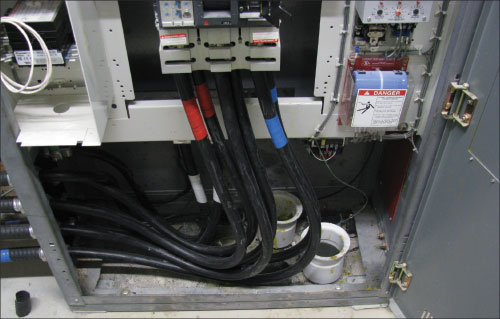
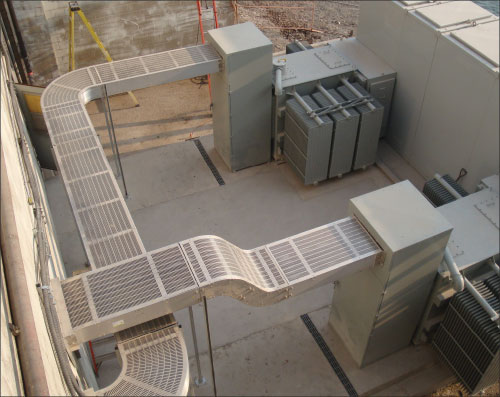
The “5% rule” has been deleted! Subrule (1) for Rule 8-106 of the 2015 CE Code has been deleted. The rationale provided for this deletion was:
- Relaxation allowed for selection of ampacity of conductors by this Subrule conflicts with fundamental provisions of Rule 8-104.
- This relaxation creates conflict with Rule 14-104(1), where the reduced ampacity might be outside of the parameters of Table 13.
- This relaxation generates lots of inconsistency and confusion among the Code users on application of Subrule 8-106(1).
- This relaxation does not belong to the scope of Section 8, as size of conductors is determined in accordance with Section 4, and the revised scope of Section 8 clearly articulates that this Section only applies to the load calculations. It should be noted that all 8-200 series rules have been recently revised so as to indicate that each of these Rules now applies not to “the minimum ampacity of service or feeder conductors”, but to the “calculated load for the service or feeder”.
- This relaxation of conductors’ ampacity does not belong to Rule 8-106 as well, as it has nothing to do with demand factors covered by Rule 8-106.
Two new subrules regarding loading controlled by an electric vehicle energy management system have been added to the end of Rule 8-106. The first additional subrule allows the demand load for the electric vehicle supply equipment to be equal to the maximum load permitted by the electric vehicle energy management system. The last additional subrule does not require electric vehicle loads to be included in determination of the calculated load where the electric vehicle energy management system monitors the consumer’s service and feeders and controls the electric vehicle supply equipment loads. In conjunction with these subrules, wording has been added to Rules 8-200, 8-202, 8-204, 8-206, 8-208 and 8-210, providing relevant demand factors for electric vehicle supply loads located in different occupancies. In addition, a new Rule 8-500 Electric Vehicle Energy Management Systems has been introduced to provide loading direction for these installations.
Rule 8-110 that is used to determine the living area of single dwellings, and apartments and similar buildings has been revised replacing the words “on the upper floor” with “above the ground floor”, and replacing “basement” with “below the ground floor”. The new wording makes it clear the calculation applies to all floors above the ground floor not just the upper floor.
Rule 8-200 was reformatted to match the layout of Rule 8-202 including removal of all references to ampacities and replacing these references to the loads in Watts. In addition, for consistency the wording “minimum ampacity of service or feeder conductors” was changed to “calculated load for the service or feeder” for Rules 8-200, 8-202, 8-204, 8-206, 8-208 and 8-210.
Rule 8-400 was retitled to cover only heater receptacles for vehicles powered by flammable or combustible fuels. Subrule (2) has changed the maximum overcurrent protection for the branch circuit to 20A aligning the code with resent changes to the standard for engine heaters and battery warmers CSA Standard C22.2 No 191. In addition, Subrules (3) and (4) have been expanded to provide the demand load to be used for these 20 A branch circuit.











Find Us on Socials